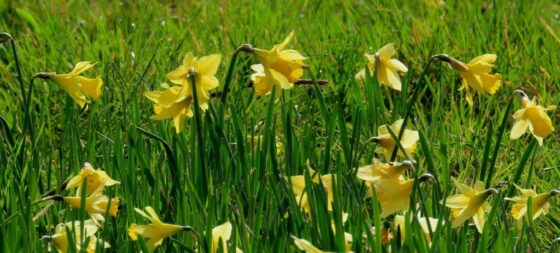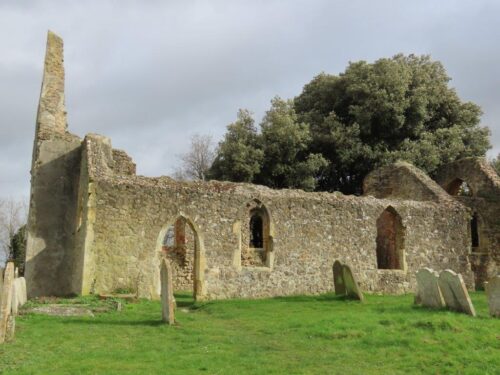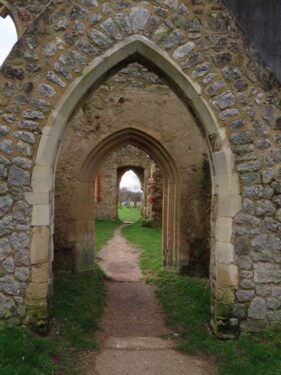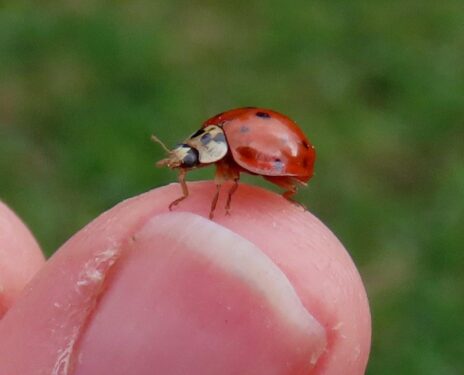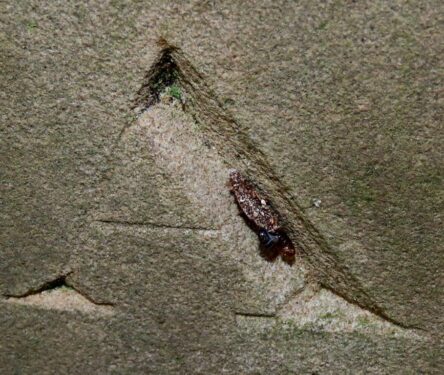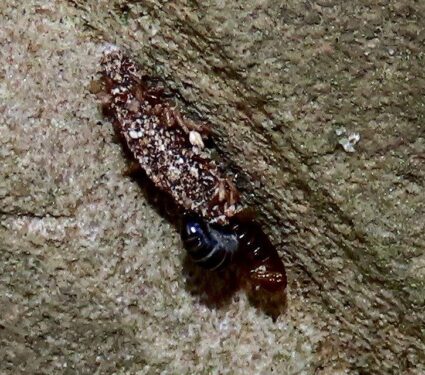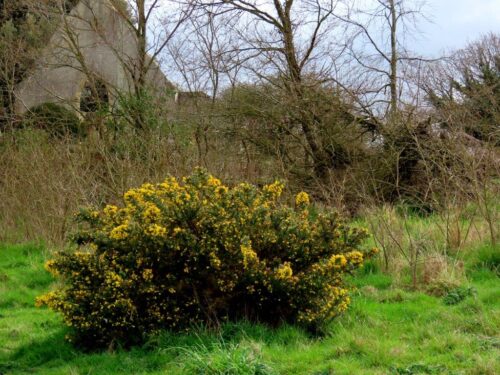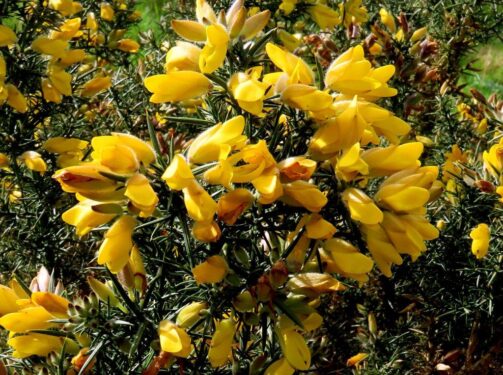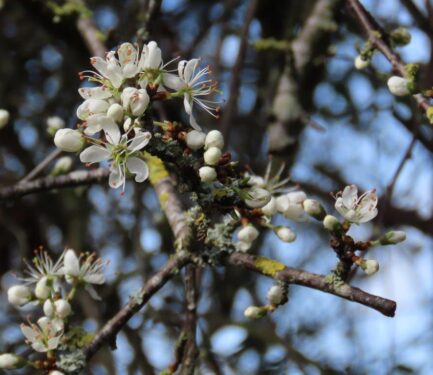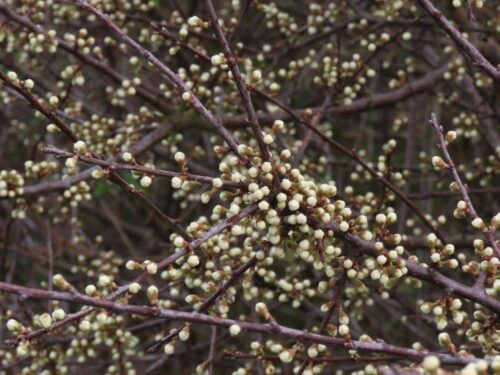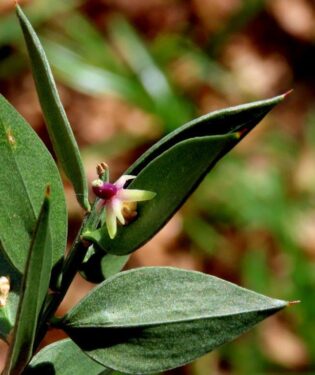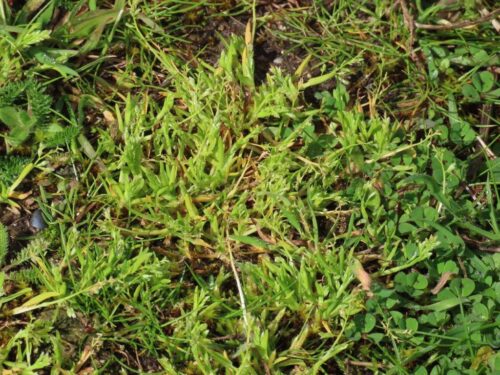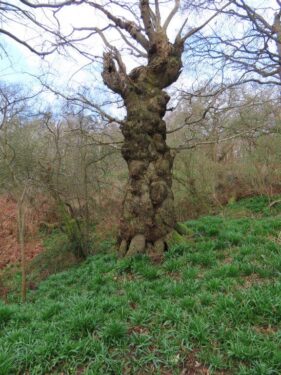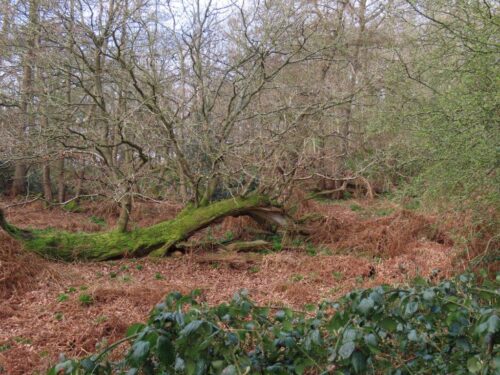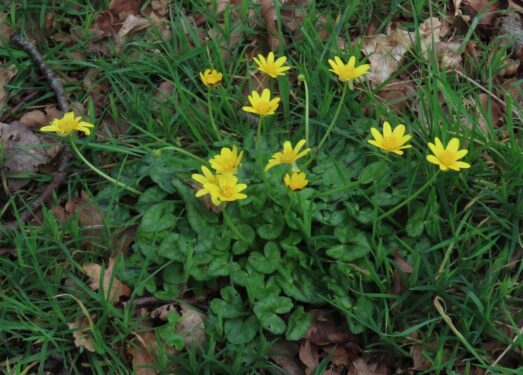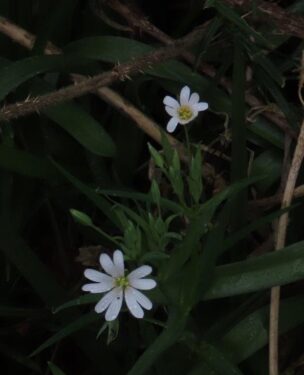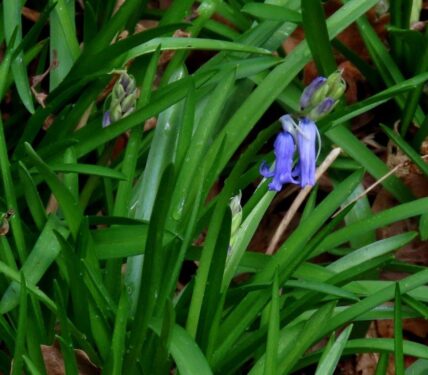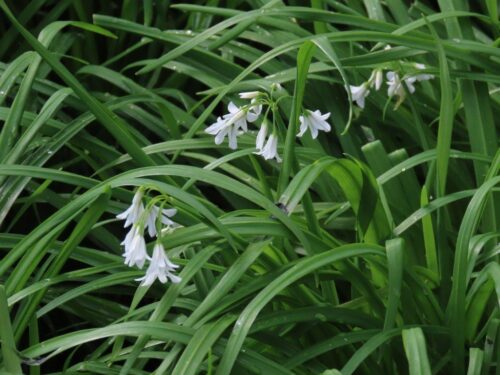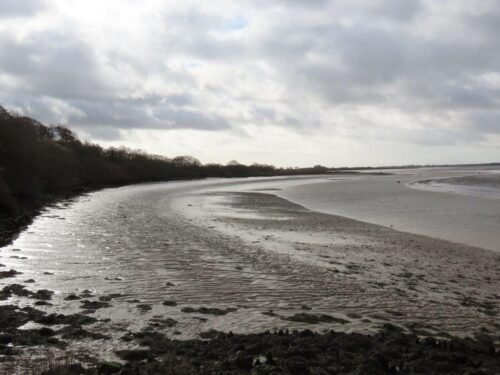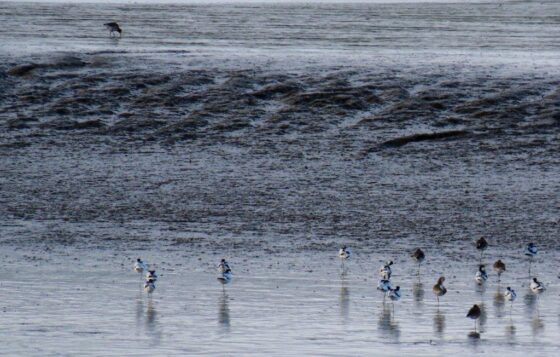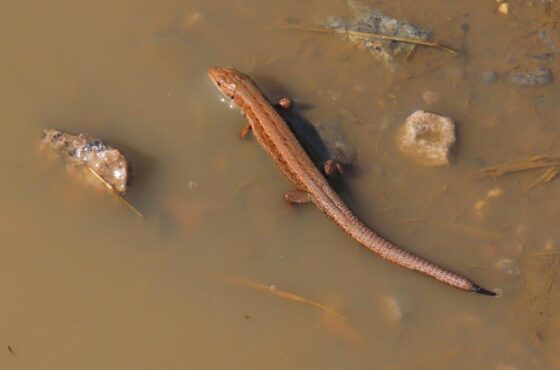Spring was certainly in the air for our latest WildEssex walk… but so was quite a lot of rain and drizzle: April showers two weeks early…! We began at Alresford Old Church, the ruins lit up with transient sunlight and as impressive as ever.
The churchyard is one of the best in this area for the richness of its flora, with Common Dog-violet and both Red and White Dead-nettle flowering, a swathe of Wild Daffodils (or a close approximation thereof) and the delightful citrussy-mint aroma from Lesser Calamint leaves.
While the rest of us were looking at flowers, Jude was finding insects , including a 10-spot Ladybird and (best of all) a bagworm nestling within a gravestone inscription. Bagworms are very unmothy moths, and always interesting (see here for a previous blog about them), but this one wasn’t one of the usual Virgin Bagworms. For a start its bag was much larger than that species, some 8mm long with a distinct ridge running lengthwise, and probably of one of the three Dahlica species, all of which are pretty uncommon. And what’s more this had a larviform flightless female just emerged from her pupa, and it seems about to start egg-laying back into the bag!
Heading down to the Sixpenny Brook, the first of several Chiffchaffs was singing, signs of a very recent arrival perhaps, rather than over-winterers coming into song. Gorse was in full bloom and, in the sun, starting to scent the air with coconut, and attracting bees and hoverflies. Blackthorn too looked stunning, some bushes in bud while others were fully open.
Onto Cutthroat Lane, we passed a magnificent bush of Butchers’-broom, still showing a few flowers, each a subtle gem, and acid-green patches of Early Meadow-grass, a recent arrival here from more southerly heartlands:
Then down the edge of Grange Wood, with magnificent oak pollards and coppice stools on the woodbank, standing amidst the Lesser Celandines and the first few Greater Stitchwort flowers…
… while the Bluebells that will be so glorious in four weeks were just bursting, along with (outside the bounds of the ancient wood) Three-cornered Leeks.
And so we found ourselves on the shoreline, with many of the estuarine winter birds still here, including hundreds of Black-tailed Godwits, a hundred or so burbling Brent Geese and about 40 Avocets – the three birds for which the Colne is justifiably renowned and specially protected.
Sadly no one was with us to see our final, bizarre sight of the walk as we headed back home. There in a puddle on the top of the sea wall was a Common Lizard, almost covered by water, and doing a passable impression of an overactive newt! Eventually we managed to persuade it from its bath and released it into the long grass safe from feet and dogs.
